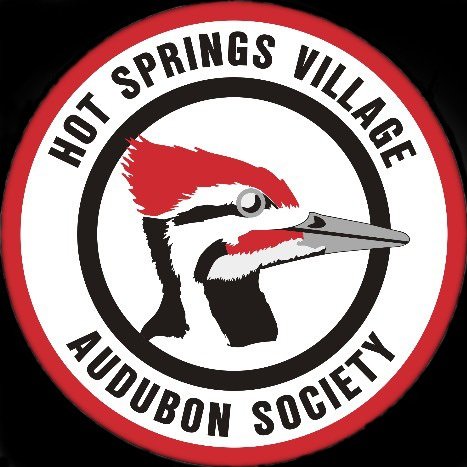Birding in the Village - Trails & Parks
We are blessed in the Village with a variety of great places to bird. Here are the highlights of a few places that you may want to check out.
Magellan Beaver Dam Trail
The mix of cover around the trail makes this the overall birdiest area in the Village. If you know your birds it's pretty easy to get 20 species in an hour or so. Over 40 are possible during migration periods.
Special thanks to John Taylor for this fantastic flyover of Beaver Dam Trail.
The creek and old beaver dam ponds attract Wood Ducks in the summer and Mallards and Gadwall in the winter. Migrating Blue-winged and Green-winged Teal are occasional visitors. Great Blue Herons, Red-shouldered Hawks and Belted Kingfishers are always a good possibility. Coopers and Sharp-shinned Hawks are around but you'll be lucky to see them. Pond edges near thick brush are great places to spot Song and Swamp Sparrows in the winter, plus there is a fair chance of sighting a tiny Winter Wren. Tangles of brush and vines attracted numerous White-throated Sparrows, occasional Fox Sparrows (both winter) and plenty of Cardinals, Titmice, and Carolina Wrens year-round. There are always Brown Thrashers and Hermit Thrushes (winter) lurking but they are not easy to find.
Regular nesting summer visitors include White-eyed and Red-eyed Vireos and Common Yellowthroat and Black-and-White Warblers. A singing (and maybe nesting) Kentucky Warbler has been present in the spring and early summer the last couple of years. Don't forget to check the power wires around the storage area as you approach the trailhead for Bluebirds, Starlings and the rare Kestral.
Cedar Creek Trail
The cover at Cedar Creek is less diverse than the Beaver Dam Trail but there are more hardwoods. It's a good area for woodpeckers including Hairys.
Cedar Creek is your best bet to hear or, if you're lucky, spot Barred Owls. Red-shouldered Hawks nest there most years. The steel bridge over the creek has been a great place to find Louisiana Waterthrush in the spring and early summer.
The area around the trail is usually home to a flock of wild Turkeys. Even though they are seldom seen while walking the trail, a gobbling Tom wouldn't be a surprise. A side note: Cedar Creek has great wildflowers in the spring.
Coronado Center
This is a surprisingly birdy area. The combination of hedge rows, maintained Bluebird boxes, open space, mature trees and the lake is attractive to a lot of species.
The walking trail that starts behind the library follows a cove of the lake for a bit and then a creek. The birding is good for the first 1/4 mile but drops off as the trail nears Balearic Road.
Lakes and Golf Course Ponds
Wood Ducks and the occasional Mallard are usually our only waterfowl in the summer. Witner is the time for waterfowl in the Village.
The largest rafts of diving ducks, typically, Bufflehead, Common Goldeneye, Lesser Scaup and Ring-necked will be found on the largest lakes. If you only have time for one spot, Lake Balboa offers the best chance for Horned Crebes, Common Loons and Bald Eagles or Osprey.
Our smaller Lakes can provide surprising waterfowl birding but are hit-and-miss. Bird numbers seem to go down as the number of houses go up.
A not-so-secret waterfowl hotspot is the golf course pond between Cortez #s 1 and 8. Not only are there a variety of divers in the winter but it is the best place to see Wood Ducks in the summer, thanks to the residents who provide nesting boxes.
Golf Courses
Golf Courses typically have a range of bird essentials, such as flower gardens, shrubs, large trees, pond and maybe most important, homeowners with bird feeders.
A few specifics:
Magellan and Cortez often have nesting Scissor-tailed Flycatchers. They prefer the tops of the large pines around the Clubhouses. The trees between the driving range and #1 at Magellan are the best bet to spot Red-headed Woodpeckers.
While at Magellan check out the area around the lower practice green. Brown-headed Nuthatches are common in the pines around the Granada Clubhouse. Cortez and Ponce are the best bets for Mississippi Kites and Broad-winged Hawks in the summer.
Not Quite the Village
Danville and Goosepond Roads aren't Village roads even though they cut through the heart of the Village. If you look at a map, you will see that they connect in a large loop. The farms and forests on these roads provide a chance to see some birds that you won't see in the Village.
Depending on time of year, look for Eastern Meadowlarks in the farm fields; the barb wired fences are great places fo find Savannah Sparrows, Eastern Kingbirds, Scissor-tailed Flycatchers, and if you are really lucky, Bobolinks. The immature pine plantation on the gravel section of the road has had Prairie Warblers in the spring.
Explore Arkansas - 52 State Parks
Dr. Dan Scheiman spots a Luna Moth.
There's a reason that Arkansas is known as "The Natural State" - visit any of the 52 State Parks to see why. State parks feature many activities —such as a mountain bike trail, golf course, fishing lake or cabin— choose whatever suits you best.
From the Ozark National Forest to the Mississippi River, you'll find everything you need to plan your next outdoor adventure. Start today!


